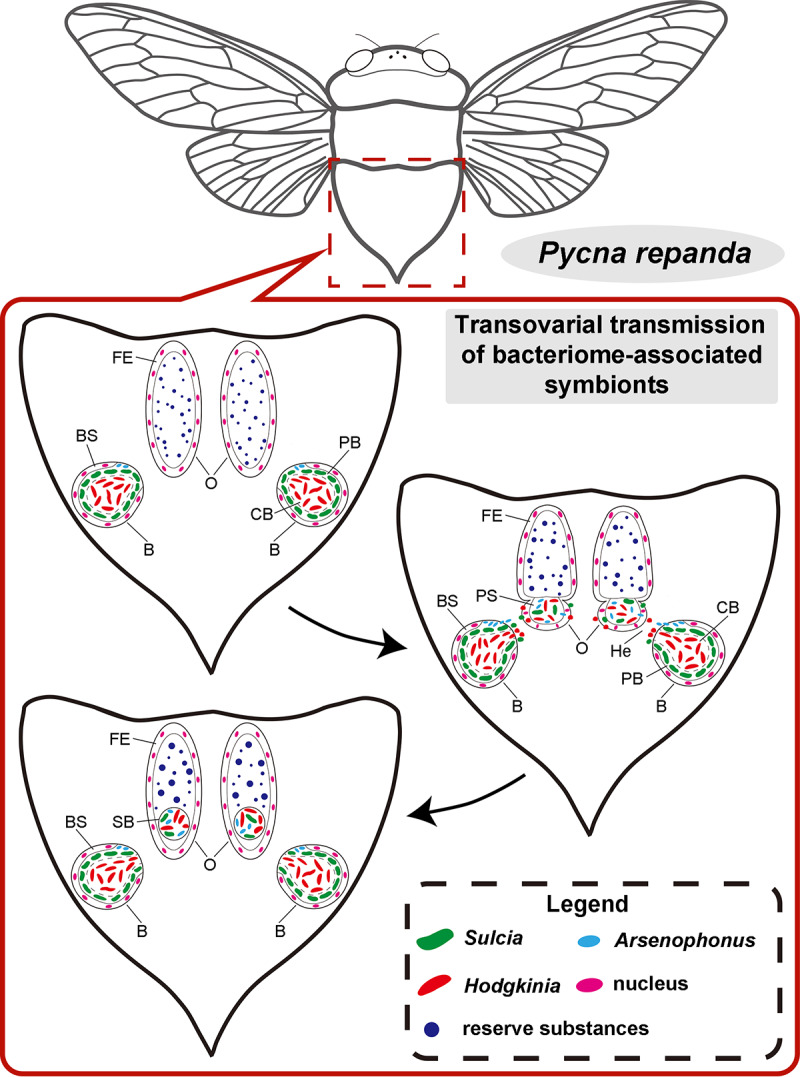FIG 5.

Schematic representation showing the transovarial transmission process for the bacteriome-associated symbionts of Pycna repanda. In mature females, Arsenophonus together with “Ca. Hodgkinia” and “Ca. Sulcia” leave the bacteriome (B) for the hemolymph (He), gather toward the posterior pole of the oocytes (O), migrate through the single-layered follicular epithelium (FE) into the perivitelline space (PS), and finally form a characteristic symbiont ball (SB) at the posterior pole of the oocytes. BS, bacteriome sheath; CB, central bacteriocyte; PB, peripheral bacteriocyte.
